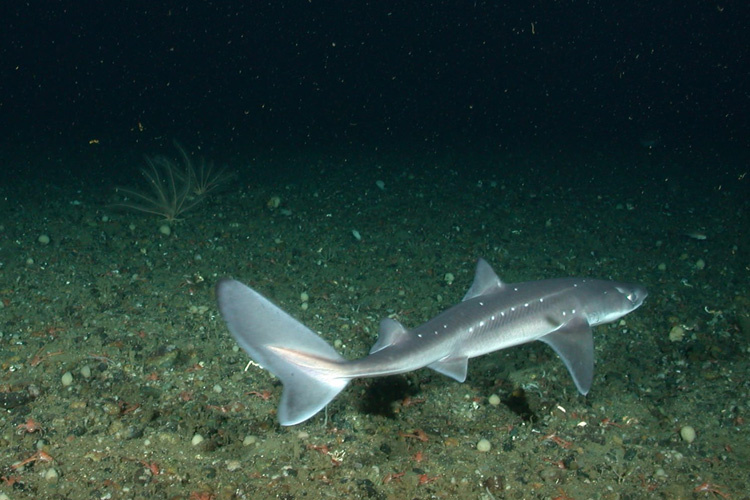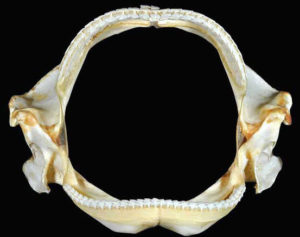
Spiny Dogfish – Habitat and Management
While it’s called the Spiny Dogfish, it’s actually a shark. With grey or brown coloring on top and white below, they often are seen with white spots on their sides. Small and thin, males can grow to 3.3 feet while females can grow to 4 feet.
They are aggressive and relentless pursuers. Along the front of their dorsal fins, they have sharp spines that are poisonous to prey. With strong jaws and teeth, they will eat almost anything they can catch. Even newborn spiny dogfish will attack sea creatures twice their size.
Habitat
Spiny Dogfish are found in both the North Pacific and North Atlantic Oceans, most commonly in subarctic and temperate climates. They will range from Florida to Nova Scotia on the east coast of the United States and from Baja California to Alaska on the west coast. They are bottom-dwellers who can dive to great depth and are found in many of America’s national marine sanctuaries, including Stellwagen Bank NMS and Gray’s Reef.
Migratory Habits
Highly migratory, spiny dogfish travel in schools and spend winters in deep water and feed infrequently. In summer, they spend their time in warm coastal waters.
Predator and Prey
The term “dogfish” comes from this shark’s habit of hunting for prey and feeding in packs. The packs can number in the thousands. Common food sources include jellyfish, squid, crab, worms, octopus, and schools of fish. Smaller spiny dogfish will feed mainly on crustaceans.
They are voracious eaters. Fisherman report seeing packs of dogfish consuming large quantities of fish such as mackerel and herring and even biting through their nets to release the fish. Because of its spines, this sea creature can also cause damage to commercial fishing nets.
They can become prey for larger sea creatures. Larger sharks, seals, orcas, some larger fish, and even other spiny dogfish will feed on them. Their spines are used to thwart potential predators. Dogfish can curl into a bow shape and strike out, wounding attackers.
Management
The most recent stock assessment, reported in 2015, determined that spiny dogfish are not being overfished. Experts project the mature female population may decline in the future, but the potential decline is not expected to result in significant changes to the stock.
They are not in demand in the United States as a food source, although they are considered a smart seafood choice because they are managed sustainably and responsibly harvested. They are more popular in some international markets, such as European countries where your order of fish and chips might include spiny dogfish meat. It is also used as a fish meal and in the production of fish oil.
Previously, spiny dogfish had been overfished. In 2010, NOAA (National Oceanic and Atmospheric Administration) put in place a management plan to help the stocks recover. In order to manage the spiny dogfish population, fishermen must have a permit in order to catch them and abide by trip limits and annual catch limits. There is also a quota on commercial fishing.
Spiny Dogfish Facts:
- Like other sharks, it is covered with toothlike scales called denticles
- Can have up to a 24-month gestation period, one of the longest pregnancy of any known vertebrate, giving birth to up to 15 offerings
- Spiny dogfish can live 100 years
- They can swim long distances. One tagged spiny dogfish was followed swimming more than 5,000 miles
- It is also known as Mud Shark, Piked Dogfish, Blue Dog, Rock Salmon, Spiky Dog or Spurdog

The Spiny Dogfish is just one of the amazing species that call America’s national marine sanctuaries home. The National Marine Sanctuary Foundation supports America’s most treasured underwater places by helping conserve wildlife, habitats, and heritage.
Other Recent Creature Features:
